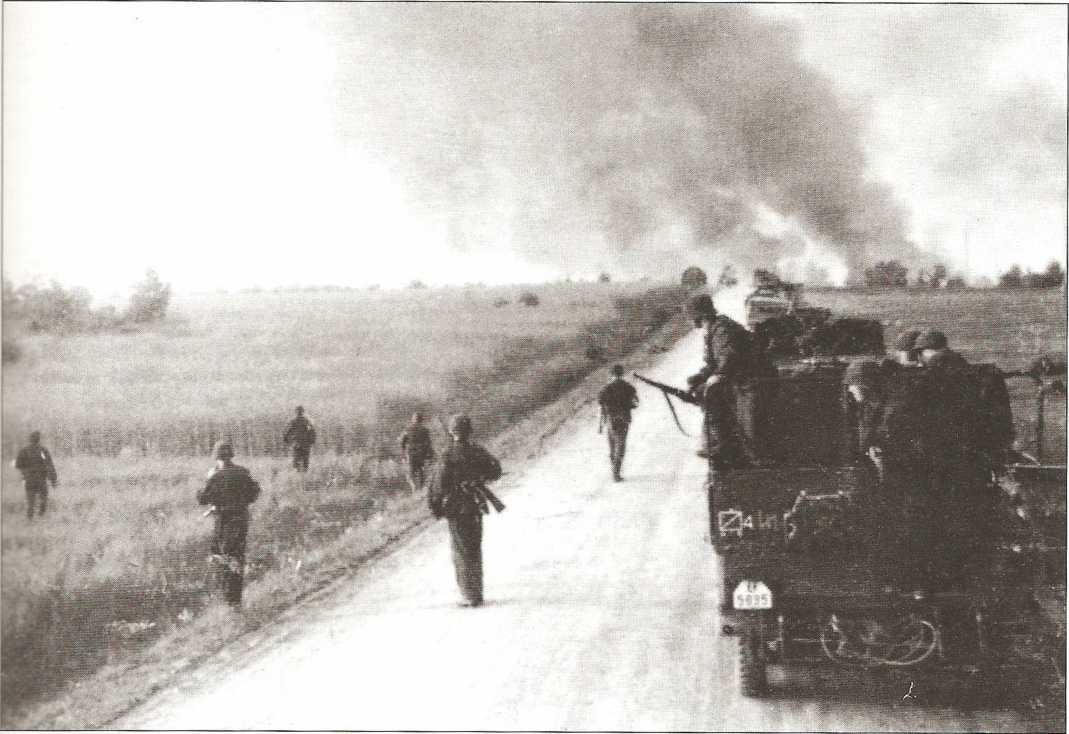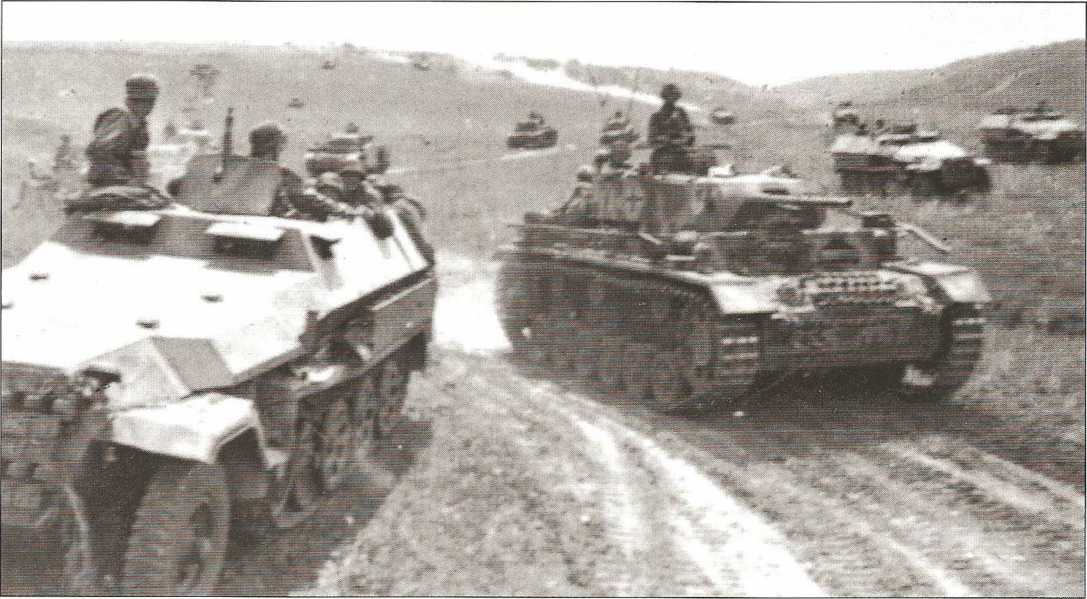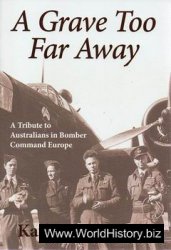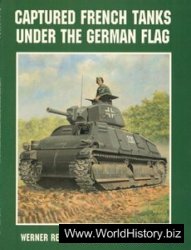As noted above, the motorised infantry divisions were just that: infantry formations carried by motorised transport, usually trucks and motorcycles. Although more mobile and thus able to keep up with the panzer divisions spearheading the advance, the motorised divisions were organised along the lines of their regular infantry division counterparts in terms of structure. The manpower and equipment strength
Below: Panzergrenadiers debus from a lorry after making contact with the enemy on the Eastern Front. These panzergrenadiers would then mount a conventional infantry assault to clear away the opposition, before resuming their advance.

Of a typical 1939 motorised infantry division was as follows: 16,445 men in total, of which 492 were officers. They were transported by 989 troop trucks, 1627 other lorries, 1323 motorcycles, and 621 motorcycle combinations (these were still an important part of the troops’ transport). The reconnaissance battalion had 30 armoured cars. The artillery available included 84 light and 54 medium mortars, 24 light infantry guns, 72 PaK 36 anti-tank guns, 36 light and 12 heavy field howitzers, and 12 20mm anti-aircraft guns.
Although the motorised infantry component was reduced after the Polish campaign, the basic structure of the division did not alter until 1942. In the summer of that year the High Command provided a number of the motorised divisions with a battalion of tanks. This considerably increased the division’s combat potential, and proved successful enough for this to become standard practice. Although initially many of these units were equipped with tanks - sometimes Pz Kpfw III and more commonly Pz Kpfw IV - assault guns were far more usual, particularly as the war progressed.
The middle years of the war led to a number of changes of terminology for the motorised divisions. In October 1942 the infantry regiments of the motorised infantry were renamed ‘grenadier regiments’. Subsequently, in March 1943, they became known as panzergrenadier regiments. The following year, on 23 June 1943, all the German Army’s motorised infantry divisions became panzergrenadier divisions, with the exception of the 14th and 36th Divisions. These were demotorised and reverted to simple infantry formations. The Type 1943 panzergrenadier division of 24 September 1943 consisted, on paper, of headquarters staff, two panzergrenadier regiments, each consisting of three battalions each (this was an increase on the size of a motorised division), an armoured battalion with tanks or more often Sturmgeschutz assault guns, an anti-tank battalion (in theory self-propelled), a reconnaissance battalion, an artillery regiment, a flak battalion, a signal battalion and various support formations. The divisional strength was 15,418 men of which 415 were officers. The firepower available to the division consisted of 46 medium and 24 heavy mortars, 14 light and 4 heavy infantry pieces, 21 75mm anti-tank

Above: German armour and armoured personnel carriers assembling for Operation Zitadelle (the attack on the Kursk salient) in the summer of 1943. In the foreground is a Sd Kfz 251 alongside a Pz Kpfw III.
Guns, 24 flamethrowers in the hands of the engineers, 42 20mm and 4 88mm anti-aircraft guns, 18 armoured (usually 20mm cannon-armed) cars for the reconnaissance battalion, 43 self propelled anti-tank guns and 45 tanks or assault guns. Given the combat losses endured by many German panzer divisions by mid 1943, fully-equipped panzergrenadier divisions often contained as many tanks as their depleted armoured equivalent.




 World History
World History









